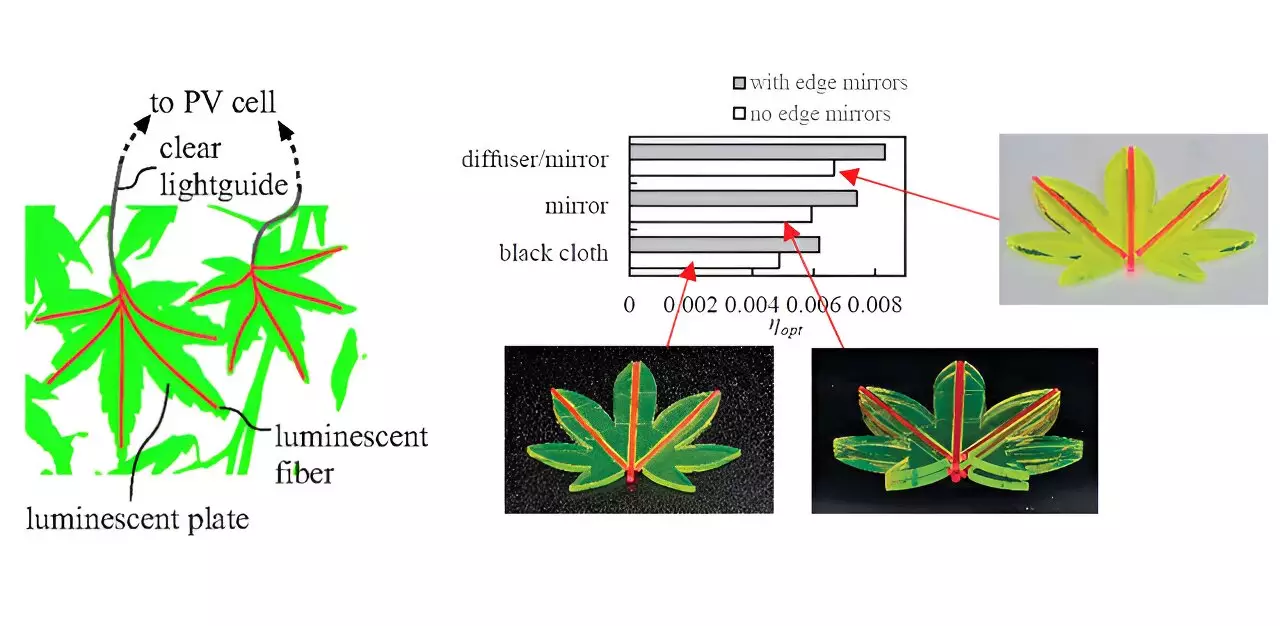The luminescent solar concentrator (LSC) has been a revolutionary invention since the 1970s, aiming to improve solar energy capture by utilizing luminescent materials to convert and concentrate sunlight onto photovoltaic (PV) cells. Unlike traditional concentrators that rely on mirrors and lenses, LSCs have the advantage of being able to harvest diffuse light and have been utilized in various applications such as building-integrated photovoltaics. Despite their advantages, scaling up LSCs to cover large areas has presented challenges due to issues like self-absorption of photoluminescent (PL) photons within the waveguide.
Researchers at Ritsumeikan University in Japan have introduced an innovative “leaf LSC” model that addresses the scalability problem and promises to enhance the collection and transfer of light to photovoltaic cells. The leaf LSC design involves using smaller, interconnected luminescent components that function similar to the leaves on a tree. This innovative setup includes placing luminescent plates around a central luminescent fiber, with the plates’ sides facing the fiber. By converting incident photons into PL photons, the plates then guide the light through the fiber to be collected at its tip by a PV cell.
The modular design of the leaf LSC offers several advantages, including improved efficiency of photon collection by reducing the lateral size of individual modules. Researchers have found that by decreasing the side length of a square leaf LSC from 50 mm to 10 mm, the photon collection efficiency significantly increases. Additionally, the modular design allows for easy replacement of damaged units and integration of advanced luminescent materials as they become available.
To further enhance the efficiency of the leaf LSC design, researchers have integrated techniques from traditional planar LSCs, such as edge mirrors and tandem structures. Through experiments, they have demonstrated that the optical efficiency of these leaf-like structures can be calculated analytically based on the spectrum and intensity of incident light using a single-spot excitation technique. This integration of traditional techniques into the innovative leaf LSC design showcases a creative approach to advancing the concept of luminescent solar concentrators.
Optimizing photon collection in LSCs through innovations like the leaf LSC design has the potential to pave the way for more flexible and scalable solar energy solutions. This approach to energy harvesting could revolutionize the application of solar concentrators, making them more efficient and adaptable for various uses, from large-scale installations to building-integrated systems. As solar energy technology continues to advance, there is great promise in significantly enhancing the performance of solar energy systems and contributing to more sustainable energy solutions.
Upon analyzing the original article, it is evident that the concept of the leaf LSC design presents a promising solution to the scalability challenges faced by traditional luminescent solar concentrators. By utilizing smaller, interconnected luminescent components and incorporating innovative techniques, the leaf LSC model offers a scalable and efficient approach to enhancing solar energy capture. Through further research and development, the integration of bio-inspired designs and advanced optical engineering could lead to groundbreaking advancements in solar energy technology.


Leave a Reply